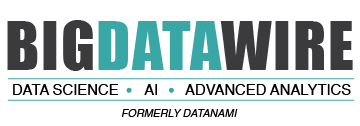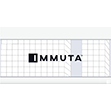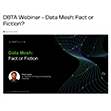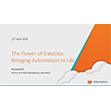
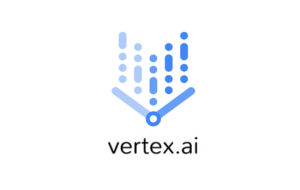
Generative AI is taking the world by storm, as organizations discover the myriad ways it can be used to serve and entice customers. With today’s enhancements to Vertex AI, Google Cloud is giving its customers more GenAI capabilities to choose from.
The pace of adoption of GenAI and large language models (LLMs) has been nothing but astonishing since OpenAI rocked the world with the launch of ChatGPT nine months ago. It also put Google in the unconventional position of playing catchup with OpenAI and its partner Microsoft–which is ironic since Google developed the core transformer model technology underpinning LLMs.
Google Cloud has narrowed the gap considerably since it started adding GenAI and LLM capabilities to Vertex AI, its flagship product for enterprise AI. According to June Yang, Google Cloud’s vice president of Cloud AI and industry solutions, the number of GenAI customer accounts in Vertex AI has grown by more than 15x in just the past quarter.
“And the GenAI products we’re seeing on Google Cloud Platform has grown by over 150 times,” Yang added during a press conference last week. “Really, just a staggering amount of growth. We’re very happy to see this type of demand.”
Newcomers to Vertex AI will have a veritable smorgasbord of LLMs and image-generating models to choose from, as the company now boasts more than 100 large foundational models in its Model Garden. PaLM is the hometown favorite, as a Google product, but you can also find Llama2, made by crosstown rival Meta, wandering the Garden. Claude 2, a foundation model developed Anthropic, is another third-party model now available to Vertex users.
An upgrade to PaLM will expand the input length by more than 4x, to 32,000 tokens. That will make it easier for customers to input longer documents and pieces of conversation into Google’s biggest foundational model, Yang says. “One of the key requests we’ve heard from customers is they want a bigger context lens windows so they can input more data,” Yang said.
PaLM also boasts full compatibility with 38 languages, including Arabic, Chinese, Japanese, German, and Spanish, among others. There are more than 100 more languages in private preview for PaLM, Yang added. Codey, a text-to-code model developed by Google, can boast up to 25% better code generation, Yang said. And Imagen, Google’s model for image generation, also boasts better quality output.
In addition to increasing the breadth and quality of foundation models, Google Cloud also announced that Vertex AI Search and Conversation is now generally available.
Vertex AI Search and Conversation utilizes vector search capabilities under the covers to provide a better search experience than keyword-search alone can provide, but without requiring advanced AI skills to integrate the search engine into customer environments. It also brings features like multi-turn search, which provides a more streamlined conversation, and conversation and search summarization.
“Think about this as Google Search for your business data,” Yang said. “You may have seen Google Search’s generative experiences from a consumer side. With Vertex AI Search, you can now offer the same generative AI experiences to your employes, partners, and customers, with built-in low code, multi-model and multi-language capabilities.”
Google Cloud also announced the general availability of Vertex AI extensions, which is set of developer tools within Vertex AI Search and Conversations that connect models to APIs to take action on real-time data.
“With extensions, a developer can now build their own extension or leverage an extension built either by Google or our partners,” Yang said. “And developers can use these extensions to build powerful GenAI application, like digital assistant, search engines, automated workflow, and more.”
The company said it’s developing pre-built extensions that connect Vertex AI to Google Cloud databases services like BigQuery and AlloyDB, the company said. It’s also committed to connecting to third-party NoSQL databases from MongoDB, Redis, and DataStax .
Google Cloud made the Vertex AI announcements at Google Cloud Next, a multi-day conference that’s expected to attract 20,000 people to San Francisco this week.
Related Items:
Duet AI Goes Everywhere in Google’s Cloud
Google Cloud Levels Up Database Services with Cloud SQL Enterprise Plus
Google Cloud Bolsters Data, Analytics, and AI Offerings
April 22, 2025
April 21, 2025
- MIT: Making AI-Generated Code More Accurate in Any Language
- Cadence Introduces Industry-First DDR5 12.8Gbps MRDIMM Gen2 IP on TSMC N3 for Cloud AI
- BigDATAwire Unveils 2025 People to Watch
April 18, 2025
- Snowflake and PostgreSQL Among Top Climbers in DB-Engines Rankings
- Capital One Software Unveils Capital One Databolt to Help Companies Tokenize Sensitive Data at Scale
- Salesforce Launches Tableau Next to Streamline Data-to-Action with Agentic Analytics
- DataVisor Named a Leader in Forrester Wave for AML Solutions, Q2 2025
- GitLab Announces the General Availability of GitLab Duo with Amazon Q
- Anthropic Joins Palantir’s FedStart Program to Deploy Claude Application
- SnapLogic Announces Partnership with Glean to Transform the Agentic Enterprise
April 17, 2025
- Qlik Highlights Real-World Enterprise AI at Qlik Connect 2025 with Lenovo, Visa, and Reworld
- SnapLogic Ushers in the Era of Infinite AI Workforce for the Agentic Enterprise With AgentCreator 3.0
- Devo Highlights Analyst Overload in Push Toward Alertless SOC
- InfluxData Launches InfluxDB 3 Core and Enterprise for Real-Time Time Series Data
- Informatica and Carnegie Mellon University Partner to Drive Innovation in GenAI for Data Management
- SnapLogic Unveils Next-Gen API Management Solution to Power the Composable and Agentic Enterprise
- Monte Carlo Launches Observability Agents To Accelerate Data + AI Monitoring and Troubleshooting
- Berkeley Lab Spotlights Efficient Method for Faster Topological Data Analysis
- Vultr Recognized for Strength in Data Sovereignty and Security in 2025 Omdia Sovereign Cloud Report
- PayPal Feeds the DL Beast with Huge Vault of Fraud Data
- OpenTelemetry Is Too Complicated, VictoriaMetrics Says
- Will Model Context Protocol (MCP) Become the Standard for Agentic AI?
- Accelerating Agentic AI Productivity with Enterprise Frameworks
- When Will Large Vision Models Have Their ChatGPT Moment?
- Thriving in the Second Wave of Big Data Modernization
- What Benchmarks Say About Agentic AI’s Coding Potential
- Google Cloud Preps for Agentic AI Era with ‘Ironwood’ TPU, New Models and Software
- Google Cloud Fleshes Out its Databases at Next 2025, with an Eye to AI
- Can We Learn to Live with AI Hallucinations?
- More Features…
- Grafana’s Annual Report Uncovers Key Insights into the Future of Observability
- Google Cloud Cranks Up the Analytics at Next 2025
- New Intel CEO Lip-Bu Tan Promises Return to Engineering Innovation in Major Address
- AI One Emerges from Stealth to “End the Data Lake Era”
- Reporter’s Notebook: AI Hype and Glory at Nvidia GTC 2025
- Snowflake Bolsters Support for Apache Iceberg Tables
- GigaOM Report Highlights Top Performers in Unstructured Data Management for 2025
- SnapLogic Connects the Dots Between Agents, APIs, and Work AI
- Excessive Cloud Spending In the Spotlight
- Mathematica Helps Crack Zodiac Killer’s Code
- More News In Brief…
- Gartner Predicts 40% of Generative AI Solutions Will Be Multimodal By 2027
- MinIO: Introducing Model Context Protocol Server for MinIO AIStor
- Dataiku Achieves AWS Generative AI Competency
- AMD Powers New Google Cloud C4D and H4D VMs with 5th Gen EPYC CPUs
- Deloitte Survey Finds AI Use and Tech Investments Top Priorities for Private Companies in 2024
- Prophecy Introduces Fully Governed Self-Service Data Preparation for Databricks SQL
- Seagate Unveils IronWolf Pro 24TB Hard Drive for SMBs and Enterprises
- CData Launches Microsoft Fabric Integration Accelerator
- MLCommons Releases New MLPerf Inference v5.0 Benchmark Results
- Opsera Raises $20M to Expand AI-Driven DevOps Platform
- More This Just In…
